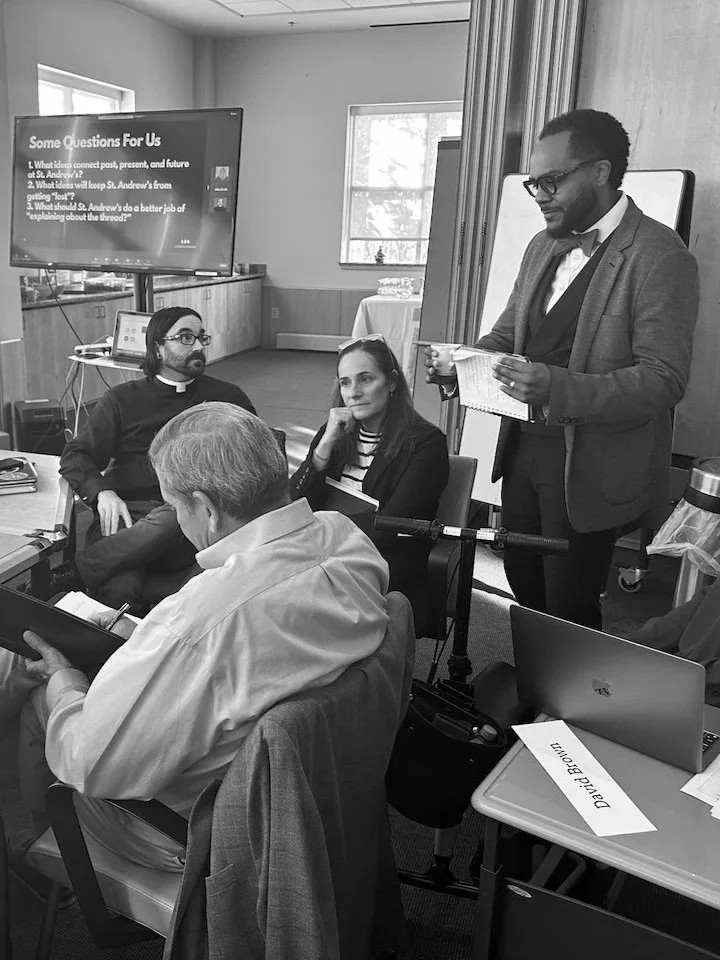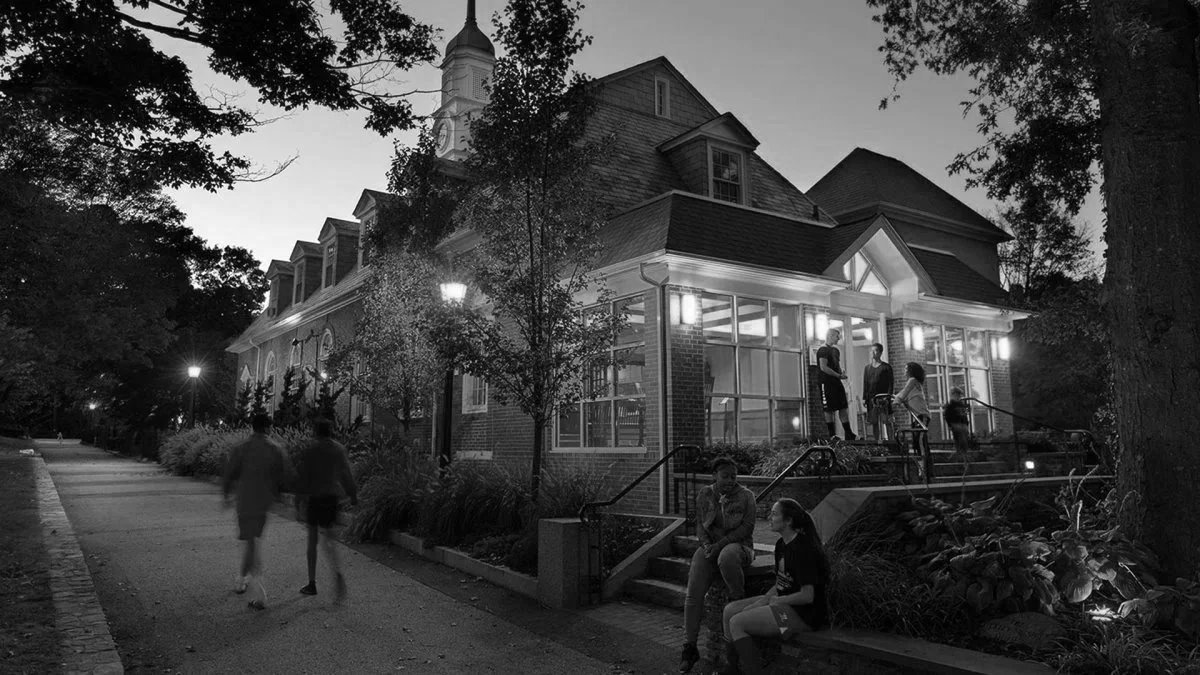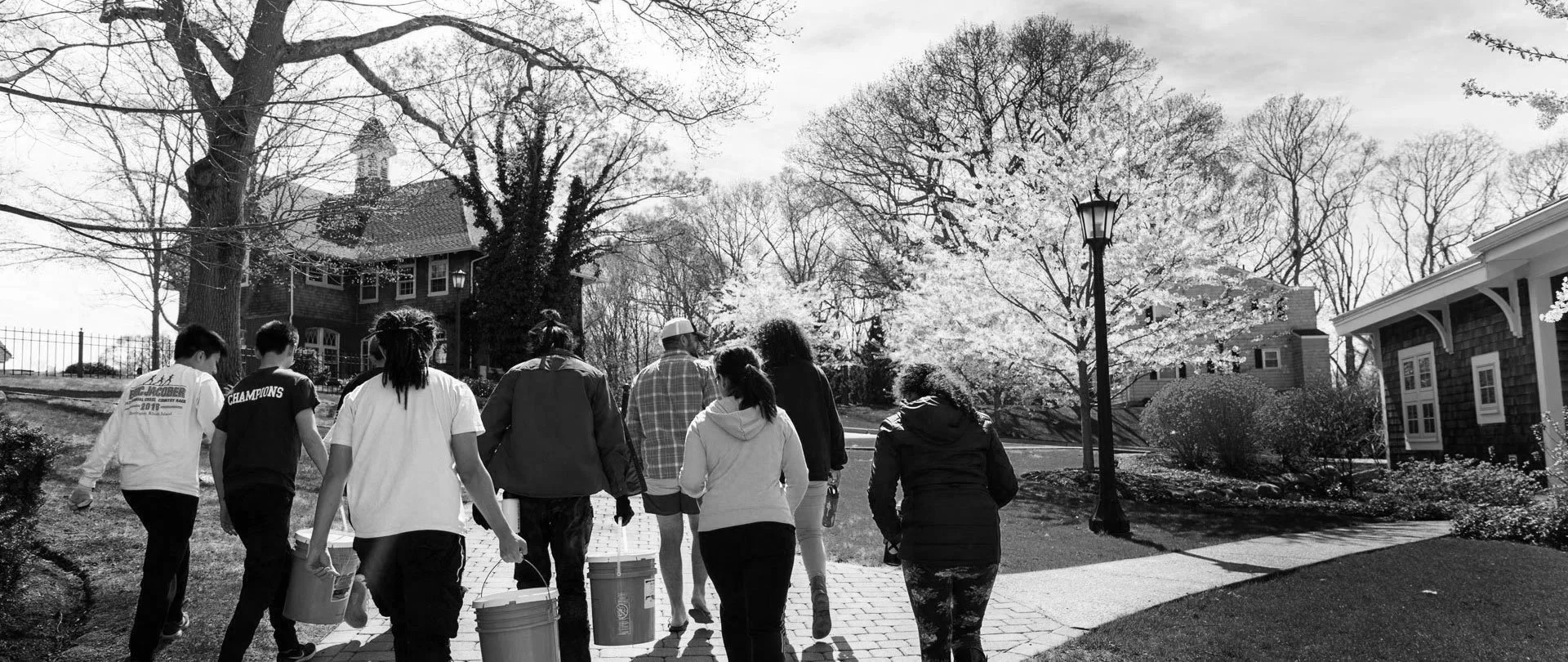St. Andrew’s School
In the fall of 2023, David Tinagero, Head of School at St. Andrew’s School, reached out to Leadership+Design (L+D) to explore support in clarifying the school’s identity. This felt like an important first step given that the school had not reviewed or revised this language for some time. David felt that it was important to begin here so that the community could come together around language that speaks to why the school exists before it embarked on articulating a vision and plan for the future. St. Andrew’s is a co-educational, non-denominational, college-preparatory boarding and day school in Barrington, Rhode Island, serving students in grades 6–12 and postgraduates on a scenic 100-acre campus. Founded in 1893, the school offers a rigorous International Baccalaureate curriculum and is known for its personalized approach to learning and deeply inclusive community, where over 30% of students receive learning support.
Our first engagement focused on designing a process to generate a new mission statement and core values. It had been some time since the existing language clearly articulated why the school exists and what it believes in, and the community was ready for this important work. By spring 2024, the design team had engaged a broad cross-section of the St. Andrew’s community and successfully crafted a new mission and clarified the school’s core values.
Enduring Design:
A Strategic Partnership for Identity and Impact
L+D Partner Antonio Viva
Around that time, David asked L+D to design a bespoke strategic planning process that would allow the school and its board to explore the needs, challenges, and opportunities essential to strengthening the school’s market position and defining it as a category of one. This marked the beginning of a second year of partnership with L+D. It was an opportunity to deepen our collaboration and co-create a bold, compelling vision for the future. That vision is now captured in the school’s new vision statement: St. Andrew’s School will serve more students, in more places, in more ways. The board unanimously adopted the strategic plan in June 2025, and David invited us to continue into a third year to support implementation.
Already, the school has begun acting on the plan, identifying key priorities for year one. These include launching a leadership program to recruit and develop future leaders and expanding the school’s mini-term, inquiry-based project learning program for students.
As we begin year three of our partnership, a few key impacts have emerged, particularly in the leadership team’s growing capacity and confidence. The tools and language introduced through our work, such as “I like, I wish, I wonder” have begun to permeate everyday conversations across the organization, signaling a cultural shift toward more reflective and intentional dialogue. David observed that the team now has a greater ability to see the arc of the year and be more thoughtful about change, a direct outcome of our work together. While the team has built significant capacity, there’s also a deepening recognition that human-centered design holds the potential to truly transform the school, not simply as a process, but as a foundational way to make decisions. L+D is working closely with the team on campus to coach a member of the community in running a design process with the faculty this year.
What makes this work powerful, David noted, is not only the tools and methodology, but the presence of a trusted partner who can guide and support the process. Because our approach is scaffolded and responsive, it feels connected to the real work of schools and accessible at every level of the organization. This is what it truly means to be in partnership—with a school, a team, and a community.




